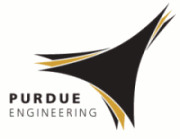Reviewer Guidelines
Peer Review Process:
The entire submission and review process is completed online using an electronic editorial system. Manuscripts that are deemed appropriate for the journal are sent to at least two experts. All reviews are “double-blind”—that is, they do not identify the author(s) to the reviewers and vice versa. A detailed explanation of the review process can be found at https://docs.lib.purdue.edu/jpeer/vol10/iss1/8
Peer Review Suggestions and Criteria:
Please briefly summarize your understanding of the purpose of the manuscript and its key claims.Provide a brief statement of its strengths and weaknesses.
Identify major issues throughout the manuscript (a list of criteria to consider is provided below). For each issue you identify, we ask that you detail your concerns (if possible with examples) and provide suggestions for improvement/correction. Point out specific places in the text where the issue occurs, and refer to the page and/or line number.
- Relevance & Significance: State clearly the scope of the manuscript and its significance to pre-college engineering education research or practice;
- Theoretical Grounding: Frame the arguments within the existing literature and explain how it builds on the current body of knowledge;
- Methodology & Approach: For empirical research, employ appropriate research designs for addressing the research questions examined with evidence of validity and reliability or credibility and dependability. For other forms of articles, employ a structure that is appropriate for the arguments made.
- Evidence Base: Provide compelling data and evidence to support claims, ideas, or results;
- Clarity of Communication: Communicate arguments clearly, succinctly, and concisely. Present data and other forms of evidence clearly with tables, figures, and supplementary materials that enhance the narrative.
Identify minor issues throughout the manuscript such as ambiguous or vague claims, incorrect or insufficient use of references, lack of consistency or clarity, and typographical errors. Conclude with an overview of your review in alignment with your decision.
Decision Categories
On the basis of the reviewers’ recommendations, the J-PEER editor(s) will make a decision. In all cases, the author will be notified of the decision, and a copy of the reviewers’ comments will be provided verbatim.
Determining to what extent a manuscript is suitable for publication poses a unique challenge for reviewers. In an effort to provide guidance, J-PEER encourages all reviewers to review the following decision categories and descriptions. Reviewers can also reach out to the Chief Editor, who is available to resolve queries and offer feedback once a decision has been reached.
Accept with Minor Revisions: The manuscript makes a value-added contribution to the field of pre-college engineering education research or practice. For a manuscript to be considered a "value-added contribution" to the field, it should: justify the importance of the argument and frame it within existing literature; identify and address a gap in current literature; suggest new methods for investigating problems in the field; or provide a new perspective on critical issues. In addition, the methodology used is appropriate, credible, and clearly conveyed. Though the manuscript meets these overarching qualifications, it could still benefit from another round of peer review. For example, a few claims and supporting data may require minor clarification.
Accept with Major Revisions: The manuscript is within the scope of pre-college engineering education research or practice. It nearly makes a value-added contribution but requires further clarification or evidence before the argument is compelling. For example, a manuscript may benefit from additional references or data analysis to validate its claims. Manuscripts in this category show potential but often fail to explicitly state the value-added contribution they are attempting to make.
Reject: The manuscript may be within the scope of the field, but it does not state or attempt to make a value-added contribution. The manuscript has multiple grammatical or methodological issues that cannot be overcome without extensive editing or rewriting. Rejected manuscripts are often either poorly organized and presented, or well-structured but lacking substantive insights into the field.


